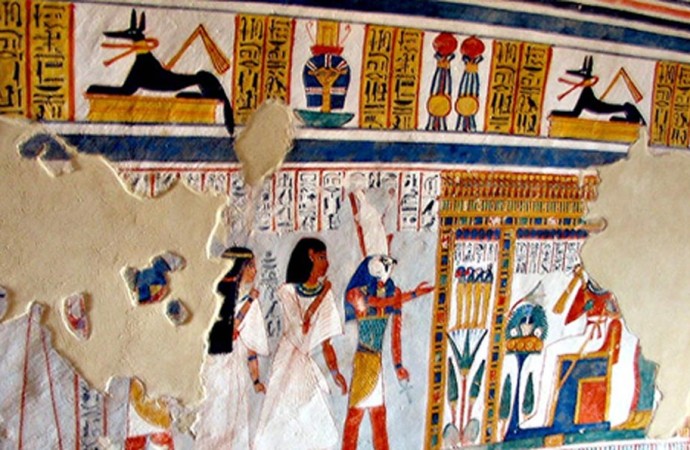Many fragments to go through, but can they decipher the ancient book?
For the last 14 years, twenty archaeologists, Egyptologists, and Spanish specialists have been working on the southern foot of the hill of Dra Abu el-Naga with a team of over a hundred Egyptian workers. During this time, they have united their efforts and been studying every part of the area, and scrutinizing every centimeter of a vast necropolis which is overflowing with burials from different eras.
Jose Manuel Galan, director of the project told the Spanish newspaper El Mundo that the site is a “real labyrinth”:
“A labyrinth that grew because in Greco-Roman times, the 2nd century BC, the partition walls were broken between the large tombs of Djehuty and Hery, which are now connected to each other, and the inside of the mountain became catacombs to bury the mummies of ibis and hawks. From the beginning we saw our work as the excavation of a necropolis. The Egyptians who visit us are surprised, but really there is nothing surprising. We are facing a necropolis with tombs of varying importance and appearance ranging from the 2000 BC, during the 11th dynasty, to Greco-Roman times.”

There are many discoveries that have been made over almost 15 years of hard work, but without a doubt the most exciting are the texts from the legendary Egyptian “Book of the Dead”, which the “overseer of treasures” Djehuty – from whom the archaeological project got its name- ordered as the decoration in his tomb.
Djehuty was an important person in the court of Queen Hatshepsut, and an intellectual who wanted to go beyond the classic decoration of graves in his time. So, he ordered that the walls of his last abode be covered with paragraphs of what experts say were parts of the “Book of Coming Forth by Day” (another translation for the Book of the Dead) which collected hymns, prayers, rituals, and songs that ensured the soul of the deceased would pass the judgement of Osiris (weighing of the heart), and cross the underworld to reach the coveted and heavenly Aaru (field of reeds).

Some fragments of the Book of the Dead detached from the ceiling of the burial chamber of Djehuty.
“At the end of construction, Djehuty thought the room was very small and decided to break two walls. In the enlargement process the roof collapsed and was buried in the antechamber. Although the robbers ransacked the chamber and burned his coffin, the burial chamber remained intact,” Galán explained to El Mundo.
The historian and epigraphist (a person who studies inscriptions/epigraphs) Lucía Díaz-Iglesias gave more details about the discovery:
“We have recovered 800 fragments belonging to the ceiling. We have it virtually complete. What we are doing is recomposing the texts and studying them. The texts of Djehuty shows one of the first versions of the Book of the Dead to be written on the walls of tombs. Before this it was printed on coffins or shrouds. We are interested in the technical circumstances of the work of the scribes and their skills because by focusing on small details you can determine their training, whether they understood the texts they copied, the mistakes they made and how many times they had to dip the brush to make the signs.”

Small statues discovered in one of the tombs of the necropolis.
“We are even beginning to identify the work of different scribes. Their training gives them away because when they write quickly they sometimes use Hieratic [a form of writing that the scribes used to simplify the hieroglyphics and save time]. It is evident that at least two different people worked on the roof by examining the spelling of words, how they made the signs, and morphology,” the expert concluded.
Source: Ancient Origins.net

































Leave a Comment
You must be logged in to post a comment.